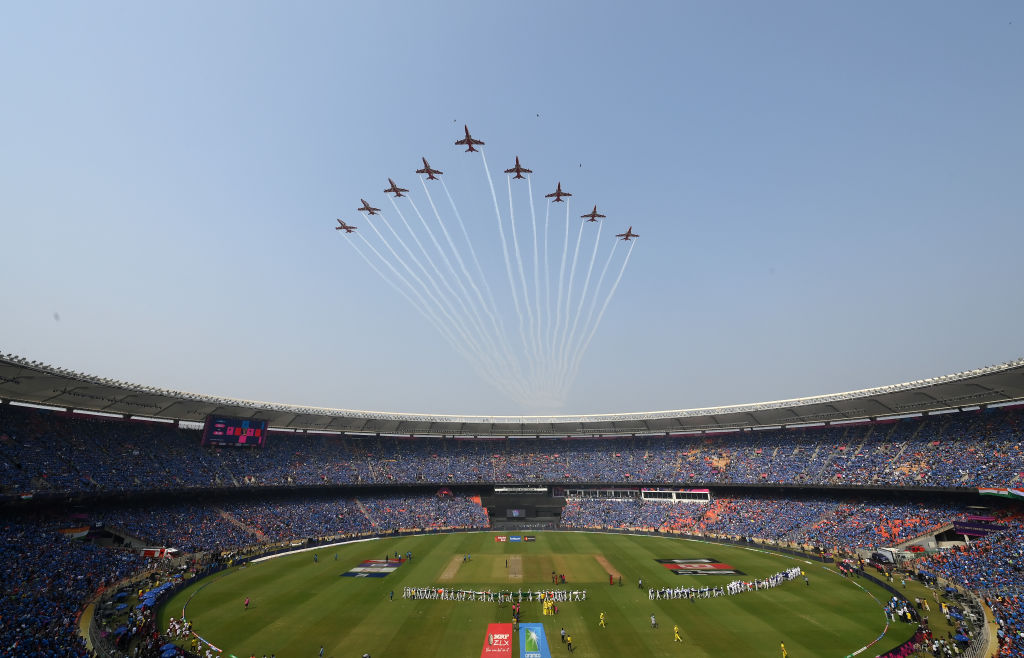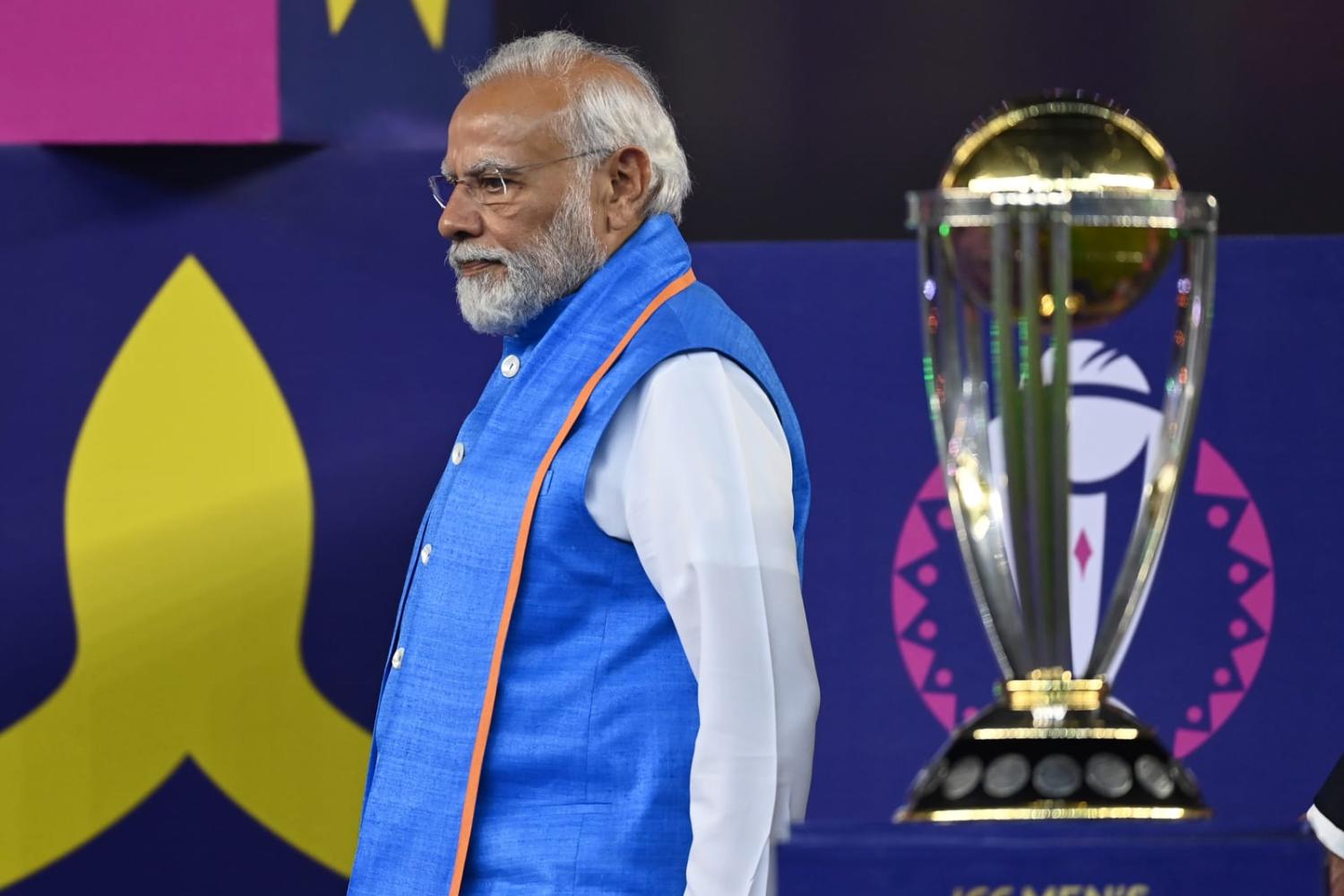It wasn’t the expected script. India had won each of its games in the 2023 Men’s Cricket World Cup, playing at home in front of massively one-sided crowds, only to fall to Australia in Ahmedabad in the final. But the result was also an upset for the man whose name adorns the stadium – India’s Prime Minister, Narendra Modi.
Modi hoped for an Indian win. Seeing the national team lift aloft the World Cup trophy is a bucket list item for an Indian prime minister, at any time, but especially one heading to elections in six months. Cricket carries substantial political capital in India and just two Indian prime ministers have seen the team prevail – Indira Gandhi in 1983 and Manmohan Singh in 2011, both Congress leaders, the opposition to Modi’s Bharatiya Janata Party.
PM Modi's request! #WorldCup2019 pic.twitter.com/OPZnWXdjAC
— Satish Acharya (@satishacharya) June 18, 2019
India’s success at the World Cup as the host this year would have been more than a sporting triumph, at least in the government’s telling. The Modi stadium represents India’s aspirations for how it views itself in the new world order – the largest cricket stadium in the world, boasting a seating capacity of 132,000 spectators. It personifies India’s vision as the world’s most populous country and a fast-growing and increasingly sophisticated economy. And, of course, with Modi at the helm.
In all cricket-playing countries, the sport is a marker of national success – particularly in the former British Empire, where victory over England can symbolise pushing back against the old imperial centre. Because of this, as with the West Indies, India’s success in cricket can be seen as an emblem of its recovery and triumph over the depredations of East India Company rule and the Raj. This idea finds a home in Indian popular culture, with films such as 2001’s Lagaan – the most expensive film made in India at the time of its release – depicting the inhabitants of a poor Indian village playing a group of arrogant British Army officers in a wager to avoid paying burdensome and unfair taxes in a clear symbol of anti-imperialism.
Sport and politics is never separate, and cricket politics is as much a part of play as leather and willow. As the great CLR James wrote, paraphrasing Kipling, “what do they know of cricket who only cricket know?”
India’s rise as a global power and its rise as a cricketing powerhouse do not share a cause-and-effect relationship – India has for decades produced some of the game’s best players. But that its political and sporting power are on the ascendance is a significant point.
Modi would have been hoping to use a victory at his eponymous stadium not just to show the world India’s status as both a global and sporting power, but also to demonstrate to the Indian public that his brand of leadership produces prestige for India.

The stadium also highlights Modi’s personal touch on Indian foreign policy. While it carries the tinge of a cult of personality, Modi has used the stadium to host visitors to underscore India’s growing closeness to its strategic partners in the West. The stadium was inaugurated by Donald Trump when US president in 2020 during his first visit to India at an event named “Namaste Trump”, the sequel to “Howdy Modi” held in 2019 in Houston where Trump performed a “warm up” act for Modi’s diaspora engagement event. Australian Prime Minister Anthony Albanese’s first official visit to India also saw an event at the Modi Stadium where Modi and Albanese rode in a chariot around the stadium to celebrate 75 years of Australia-India relations. Deputy Prime Minister Richard Marles was Modi’s guest of honour for the World Cup final, and despite the loss, Modi would have been happy to hear Marles declare that “the home of cricket now really is in India”.
For Australia and India in particular, cricket historically has been a fallback option for finding common ground – central to the so-called Three Cs of cricket, curry and commonwealth, before the geostrategic and economic factors saw the partnership develop.
To have India’s dream-run as host of the World Cup come to an end at the final match held at the Modi Stadium with Modi watching on might seem a bad omen. Certainly it means images of a cheering PM mixing with a victorious team won’t feature in the upcoming election. And in the lead-up to the final match, Congress was keen to remind the public through social media that both World Cup wins for India took place under a Congress PM. That fact might feature in a second innings.

